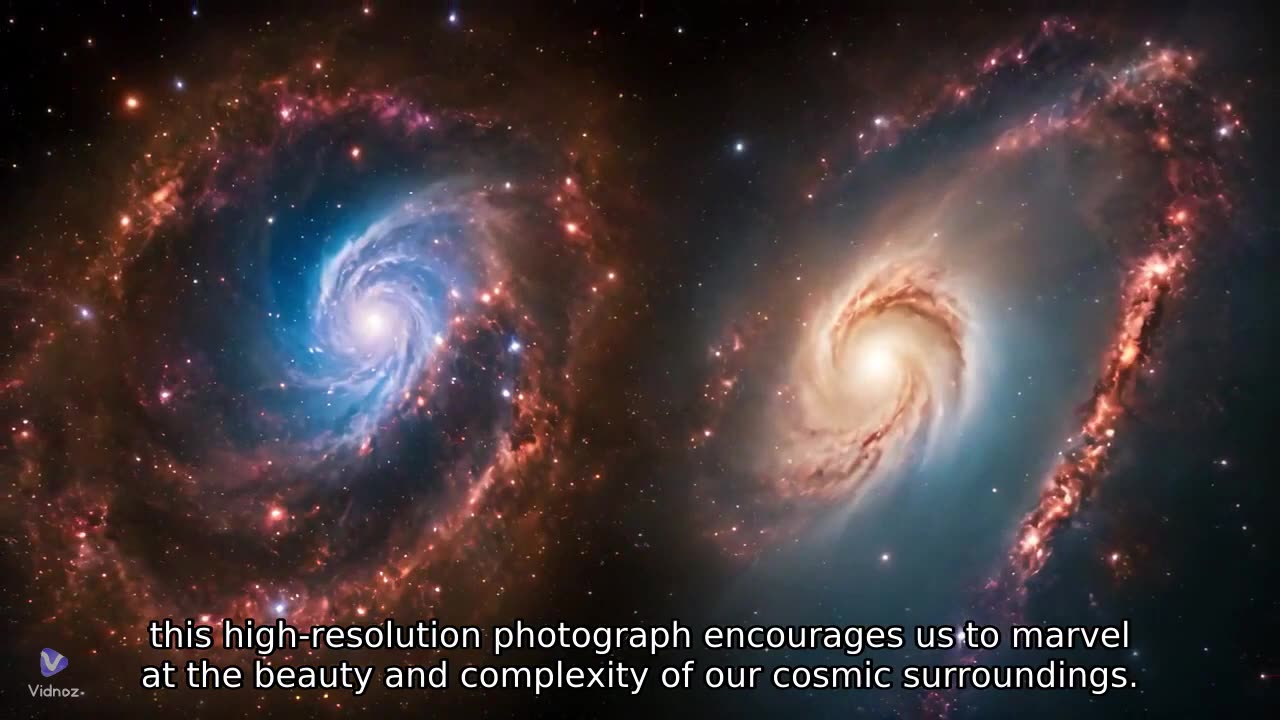Premium Only Content

Andromeda's gigapixels
The Andromeda Galaxy, also known as M31, is a neighboring spiral galaxy to our own Milky Way. It's a popular target for astronomers and astrophotography's due to its relative proximity and striking appearance in the night sky. Capturing images of Andromeda at very high resolutions can reveal incredible details of its structure, stars, and nebulae.
When people refer to "Andromeda's gigapixels," they're often talking about high-resolution images of the galaxy that contain billions (or even trillions) of pixels. These images are typically created by stitching together multiple exposures taken with powerful telescopes equipped with high-resolution cameras.
For instance, the Hubble Space Telescope has captured stunning images of Andromeda over the years, including a massive mosaic image known as the "Panchromatic Hubble Andromeda Treasury" (PHAT). This mosaic comprises thousands of individual exposures taken with Hubble's Advanced Camera for Surveys (ACS) and Wide Field Camera 3 (WFC3), covering a vast area of the galaxy in unprecedented detail.
The PHAT survey provides an immense dataset for astronomers to study the stellar populations, star formation, and structure of Andromeda. It's an example of how modern telescopes and imaging techniques allow us to explore distant galaxies with incredible precision and resolution.
These gigapixel images of Andromeda not only showcase the beauty of the galaxy but also serve as valuable resources for scientific research and public outreach, inspiring awe and wonder about the cosmos.
-
 1:08:32
1:08:32
DeVory Darkins
3 hours agoBREAKING: Minnesota Judge Makes FATAL MISTAKE Overturning Jury’s $7.2M Somali Fraud Verdict
104K78 -
 7:40
7:40
Colion Noir
1 hour agoArmed 7-Eleven Clerk Shoots Attacker & Gets Fired
6.26K23 -
 2:07:24
2:07:24
Side Scrollers Podcast
4 hours agoAsmongold/DSP RESPONSE + Kaceytron’s Life IMPLODES + Lunduke Gets Threats + More | Side Scrollers
94.4K4 -
 2:22:52
2:22:52
Steven Crowder
6 hours agoDonald Vs. Ilhan: Trump Boots Somalis and The Meltdown is Glorious
463K339 -
 1:04:37
1:04:37
Sean Unpaved
5 hours agoIs Lane Kiffin Staying At Ole Miss Or LEAVING For LSU? | UNPAVED
19.5K -
 29:48
29:48
The White House
5 hours agoPresident Trump and The First Lady Participate in the Thanksgiving Turkey Pardoning
37.4K24 -
 1:58:04
1:58:04
The Charlie Kirk Show
4 hours agoMark Kelly Court Martial + AI Embargo + Thanksgiving | Davis, Federer, Newcombe | 11.25.2025
74.7K21 -
 53:20
53:20
The Rubin Report
5 hours agoLara Trump Destroys Bill Maher’s Narrative w/ Facts in 1 Minute
54.5K61 -
 56:32
56:32
TheAlecLaceShow
3 hours agoGuest: Rep. Tim Burchett | Ukraine Russia Peace Deal | Trump SLAMS Seditious 6 | The Alec Lace Show
23.2K1 -
 LIVE
LIVE
LFA TV
17 hours agoLIVE & BREAKING NEWS! | TUESDAY 11/25/25
1,525 watching